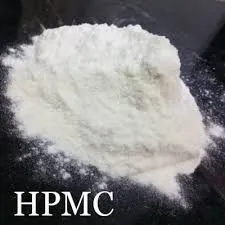
joulu . 26, 2024 06:58 Back to list
Solubility of Hydroxyethyl Cellulose in Alcohol Solutions and Their Characteristics
Understanding the Solubility of Hydroxyethyl Cellulose in Ethanol
Hydroxyethyl cellulose (HEC) is a non-ionic, water-soluble polymer widely used in various industries, including pharmaceuticals, cosmetics, and food. As a derivative of cellulose, HEC is produced by substituting hydroxyl groups on the glucose units of cellulose with hydroxyethyl groups, enhancing its solubility and functionality. One area of particular interest is the solubility of HEC in ethanol, a common solvent used in many applications.
The solubility of HEC in ethanol varies based on several factors, including the degree of substitution of the hydroxyethyl groups and the molecular weight of the polymer. Generally, HEC is more soluble in water due to its hydrophilic nature, stemming from the presence of numerous hydroxyl groups. However, its solubility in ethanol is of growing interest for formulations that require both hydrophilic and hydrophobic properties.
One primary consideration when discussing HEC solubility in ethanol is the concentration of the polymer. Lower concentrations of HEC can dissolve more readily in ethanol, leading to the formation of stable colloidal solutions. Conversely, as the concentration increases, the solubility can diminish due to an overwhelming amount of polymer chains that may entangle and precipitate out of solution. This behavior is crucial to understand in formulations where consistency and stability are necessary, such as in gels and creams.
The presence of ethanol as a solvent brings additional complexities to HEC solubility. Ethanol, being a polar solvent but also possessing some hydrophobic character, can disrupt hydrogen bonding between HEC molecules and water. This disruption can lead to partial solubility in ethanol, resulting in what can be described as a limited miscibility of HEC in this solvent. Variations in temperature also play a crucial role; increased temperatures generally enhance the solubility of HEC by increasing polymer chain mobility and reducing the viscosity of the solvent.
hydroxyethyl cellulose solubility in ethanol

In practical applications, the solubility of HEC in ethanol can be advantageous. For instance, in pharmaceuticals, HEC is often used as a thickener and stabilizer. Its ability to form gels in systems with a mixture of water and ethanol can be exploited to create controlled-release formulations or viscous solutions that adhere well to surfaces in cosmetic products. In food applications, the unique solubility characteristics of HEC allow for modifications in texture and mouthfeel, significantly improving product quality.
However, it is also essential to consider potential limitations. The interaction of HEC with ethanol can influence the physical properties of the final product, such as texture, viscosity, and appearance. Therefore, optimizing the concentration of HEC and the solvent environment is critical for achieving desired outcomes in formulation development.
Furthermore, understanding the specific characteristics of the HEC grade being used is vital. Different grades have varying molecular weights and degrees of substitution, impacting their solubility profile in ethanol. Research and experimentation are key to determining the best grade for specific applications, ensuring that the solubility of HEC complements the requirements of the formulation.
In conclusion, while hydroxyethyl cellulose is predominantly recognized for its water solubility, its interaction with ethanol presents valuable opportunities in formulation science. By considering factors such as concentration, temperature, and specific polymer characteristics, formulators can harness the properties of HEC in ethanol-based systems effectively, leading to innovative applications across various industries. Continued research into this area will undoubtedly yield further insights into the potential uses and optimization of HEC in ethanol, enhancing product development and versatility.
-
The Widespread Application of Redispersible Powder in Construction and Building Materials
NewsMay.16,2025
-
The Widespread Application of Hpmc in the Detergent Industry
NewsMay.16,2025
-
The Main Applications of Hydroxyethyl Cellulose in Paints and Coatings
NewsMay.16,2025
-
Mortar Bonding Agent: the Key to Enhancing the Adhesion Between New and Old Mortar Layers and Between Mortar and Different Substrates
NewsMay.16,2025
-
HPMC: Application as a thickener and excipient
NewsMay.16,2025
-
Hec Cellulose Cellulose: Multi functional dispersants and high-efficiency thickeners
NewsMay.16,2025







